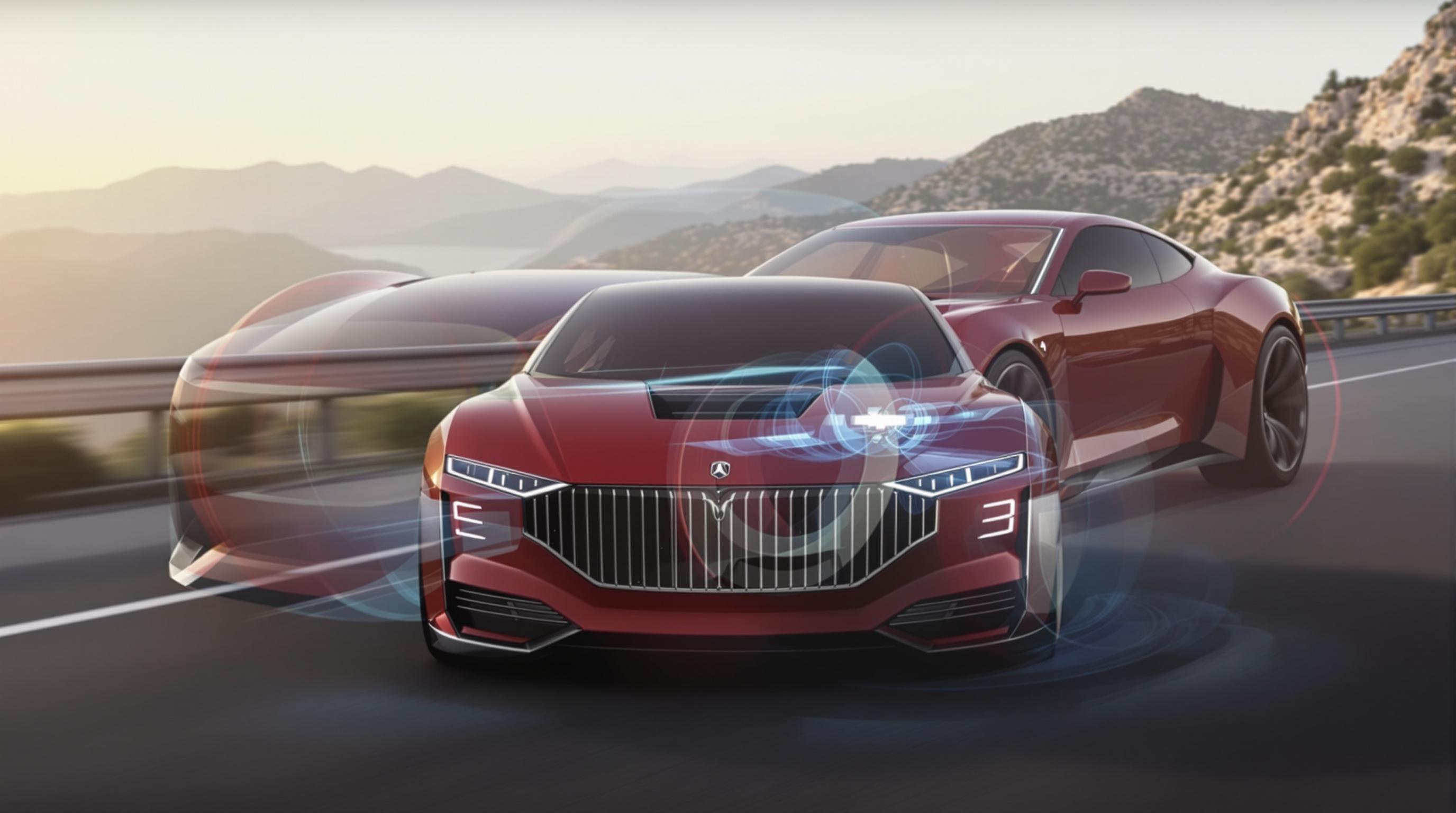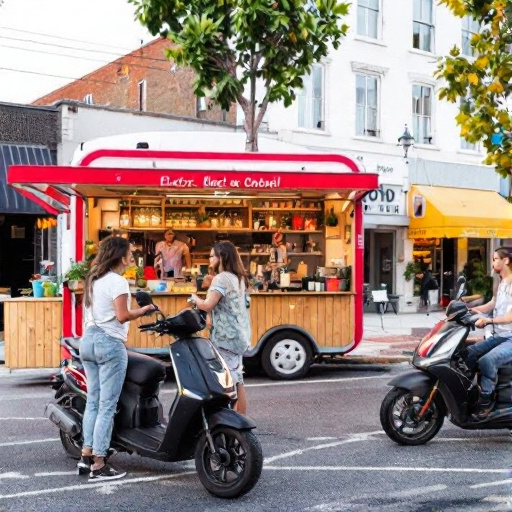Related Articles
- Charged Up! How Electric Vehicles are Reshaping Urban Wildlife Habitats and Biodiversity
- Navigating the Used Car Market: Uncovering the Secrets of 'As-Is' Sales for Savvy Buyers
- The Rise of Electric Car Pop-up Shops: A New Frontier for Urban Retail Experiences
- The Forgotten Art of DIY Car Maintenance: Rediscovering Skills in a Tech-Driven World
- Electric vs. Vintage: The Battle for Enthusiasts' Hearts in the Age of Latest Car Models
- The Rise of the 'Car Review Influencer': How Social Media is Shaping Auto Buying Decisions
"Ghost Cars: The Silent Rise of Abandoned Electric Vehicles in Post-Pandemic Urban Landscapes"
"Ghost Cars: The Silent Rise of Abandoned Electric Vehicles in Post-Pandemic Urban Landscapes"
In the post-pandemic world, urban landscapes have transformed in ways we couldn't have anticipated, including a remarkable surge in abandoned electric vehicles, or "ghost cars." This article will explore the implications of this phenomenon, uncover its causes, and reflect on what it means for our cities and the environment.
Ghost Cars: The New Normal in Urban Spaces
Imagine walking through your city, weaving among towering skyscrapers and street vendors peddling their wares. As you navigate the vibrant urban landscape, you happen upon a forgotten electric vehicle, its paint fading and tires deflated, standing as a ghostly reminder of a bygone era of enthusiasm for clean energy. These electric vehicles represent a broader trend echoing through the concrete canyons of our cities—abandonment in the face of economic downturn and social change.
The Rise of Electric Vehicles
The global market for electric vehicles (EVs) saw an impressive increase prior to the pandemic, with sales rising by 43% in 2020 alone, according to the International Energy Agency (IEA). This made 2020 a pivotal year in the transition toward sustainable transportation, with nearly 3 million EVs sold worldwide. Fast forward to 2023, and cities around the globe are grappling with a perplexing paradox: many of these vehicles, symbols of eco-friendliness and modernity, are now abandoned on streets and lots, gathered like autumn leaves.
The Impact of the Pandemic on Urban Mobility
As a 25-year-old urban dweller, I’ve observed how the pandemic forced us to rethink mobility. Remote work became the norm, reducing the daily commute that once justified the ownership of a personal vehicle. Public transportation systems also faced dramatic declines in ridership, leading many to tuck their cars away—only to find them gathering dust in the days that followed. A study by the Pew Research Center revealed that by late 2020, 38% of Americans were using public transit less often, highlighting a significant shift in mobility patterns.
The Economics of Abandonment
It’s not just joyrides that lead to abandoned vehicles. Economic pressures faced by many owners during the pandemic prompted some to liquidate what had become a liability. With an estimated 1 in 4 car owners skipping or deferring loan payments as of early 2021 (TransUnion), the financial strain on households was palpable, pushing some owners to abandon their EVs rather than face repossession. Of course, the irony is thick here: many of these vehicles were touted as the sustainable choice amidst a broader climate crisis.
Case Study: The Ghost Cars of Los Angeles
In Los Angeles, a once-bustling city notorious for its car culture, the pandemic has unveiled an unsettling surge of "ghost cars". According to a study by the City Planning Department, approximately 2,000 electric and hybrid vehicles were reported abandoned between 2020 and 2022. In a city where the car is synonymous with freedom, these lost vehicles tell a haunting tale of changing priorities and economic realities.
Environmental Perspectives
But these ghost cars are not simply relics of consumer choice; they present an environmental dilemma as well. Abandoned cars add to the impervious surfaces in urban areas, contributing to urban heat islands and exacerbating stormwater runoff concerns. Moreover, the batteries in electric vehicles, if not disposed of properly, may leach harmful materials into the soil and groundwater. According to a study in the journal 'Environmental Science & Technology' (2022), approximately 40% of abandoned EV batteries posed a risk of chemical leakage.
Reflections on Sustainability
As an eco-conscious generation, we must question the long-term sustainability of abandoning electric vehicles. Is our fascination with new technologies outpacing our ability to manage them responsibly? These ghost cars might serve as wake-up calls, urging us to think critically about our consumption patterns and the lifecycle of the products we cherish. It’s time to advocate for comprehensive waste management strategies that address the end-of-life issues surrounding electric vehicles (Davis, E., *Green Vehicle Disposal*, 2023).
Community Initiatives: Transforming Ghost Cars into Shelfies
Amidst the gloom surrounding these deserted electric vehicles, some communities are exploring creative ways to repurpose and rejuvenate them. Enter the "shelfie" movement—where local artists and environmental advocates convert abandoned EVs into mini urban gardens or public art installations. Just picture a ghost car transformed, adorned with vibrant flowers cascading from its windows or colorful murals coating its metal frame. This approach not only beautifies our urban spaces but also raises awareness about sustainable practices in an engaging manner.
Policy Responses: What Can Be Done?
Addressing the rise of ghost cars in our urban environments calls for innovative policy solutions. Local governments need to strategize new regulations around abandoned vehicles, integrating best practices from successful international examples. In Singapore, for instance, abandoned vehicles are recycled and reused as part of a robust circular economy. Could a similar model work in the U.S.? By providing incentives for recycling and refurbishing rather than neglecting, we could tackle the ghost car issue while promoting a sustainable urban fabric.
Real-Life Stories: A Day in the Life of a Ghost Car
Let’s take a moment to imagine a day in the life of one of these ghost cars. Once a proud owner drove this sleek electric car down the freeway, feeling accomplished for doing their part to combat climate change. Now, it languishes in a forgotten lot, its once-bright color dimmed by the sun’s relentless rays. Interest waned, and the car became an afterthought. Awaiting a fate of being towed, crushed, or perhaps transformed into urban art, this vehicle is a testament to our fleeting commitments to sustainability.
Is it Time for a Ghost Car Census?
Perhaps it’s time for municipalities to conduct a ghost car census. Surveys could identify the locations, conditions, and numbers of abandoned electric vehicles sprinkled throughout the urban landscape. Armed with this data, city officials could craft targeted strategies for mobilizing resources, increasing awareness, and addressing the environmental impact these ghostly vehicles carry. Just like ghost sightings, the presence of abandoned vehicles might be more pervasive than we think—but aren’t we ready to exorcise this urban blight?
A Call to Action for Urban Explorers
As urban explorers, we should take responsibility for our environment, challenging the status quo and advocating for strategic urban planning that centers around sustainability. Show up to city council meetings, start conversations, and become involved in local initiatives aiming to repurpose these abandoned vehicles. Let’s embrace the unsung heroes of sustainability and turn these ghost cars into symbols of our collective efforts toward a greener future.
Conclusion: Embracing Change, Confronting Challenges
The silent rise of ghost cars in our urban landscapes post-pandemic speaks volumes about societal shifts shaped by economic and environmental challenges. By exploring their causes, discussing potential solutions, and promoting nostalgia-free ideas, we can hope to turn these ghostly reminders into green innovations that will inspire future generations. The true tale of the ghost car is just beginning—let’s make sure it’s a story with a happy ending.
So, the next time you come across a lonely electric vehicle resting in a forgotten corner of your city, remember the complex tale it tells. Maybe it's not just a ghost but a canvas, a chance for creativity, and an opportunity for growth. With collective awareness and concerted action, we can ensure these vehicles continue to serve the ideals we once embraced and not just sit silently in shadows.




